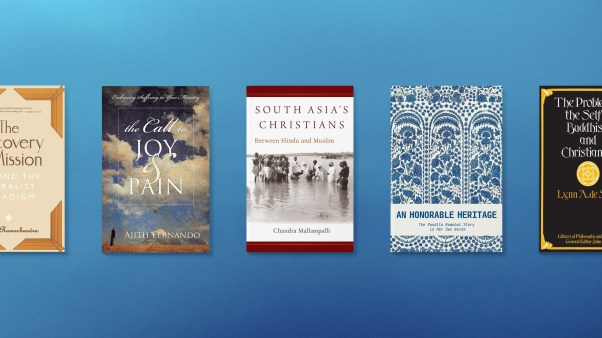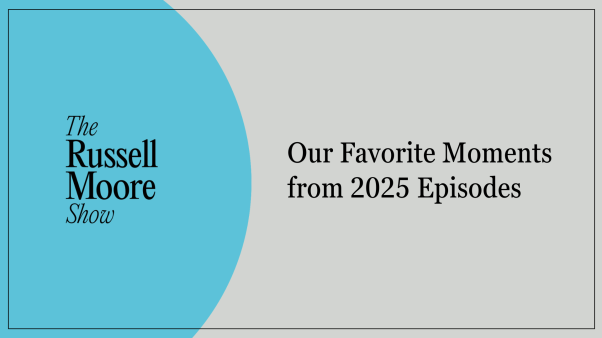The Book of Ruth, universally honored as “one of the most charming short stories in Hebrew literature,” and standing in contrast to the stories of war and military violence in Judges and Samuel, relates the everyday life and trying adventures of a family in Israel about the end of the era of the Judges (1:1).
THE NARRATIVE
The family of Elimelech from Bethlehem in Judah was afflicted by famine and migrated to Moab. Here Elimelech died and Mahlon and Chilion took for themselves Moabite wives, contrary to the law (Deut. 7:3 f.) because the Moabites were idolators and not allowed to enter the assembly of the Lord (Deut. 23:3). During the 10 years of their sojourn the two sons also died. After learning that God had visited his people, Naomi decided to leave Moab and its graves and return to Canaan. Placed before decision, Orpah gave ear to the whisperings of her natural heart and returned “to her people and to her gods,” but Ruth “clung” to her mother-in-law and testified in poetic language that she had embraced the people of God of Naomi (1:16, 17).
The arrival of Naomi and Ruth in Bethlehem caused commotion, for the painful experiences of the preceding 10 years had so changed Naomi that she was hardly recognizable (1:19–22). To provide for their daily sustenance, Ruth offered to glean among the ears of grain in accordance with the law (Lev. 19:9 f.). Here she met the man who was destined to play an important role in the rehabilitation of the afflicted family (2:1–22). Boaz, a “kinsman” (Heb. modac, acquaintance) of the family of Elimelech, master of considerable possessions, told Ruth, after she had ventured to the threshing floor one night, that he would do everything she desired. He said this also because his fellow townsmen knew that she was a “virtuous woman.” There was, however, a kinsman nearer to her than himself, and in chapter four we read the interesting deliberation at the city gate between Boaz and this kinsman.
In the lawsuit that proceeded, the duty of a redeemer and the levirate was linked in an unusual manner. The kinsman concerned was willing to take upon himself the responsibility of caring for the impoverished family (4:4). But when Boaz pointed out the exceptional character of this case, namely, that the land was encumbered by a form of levirate: the one who bought the land was bound to “buy” Ruth also “in order to restore the name of the dead to his inheritance” (4:5), the kinsman found the servitude too great. Hence, Boaz assumed the responsibilities connected with the redemption. The land became his property (4:9), and Ruth instead of Naomi became his wife (4:10). Ruth bore a son who was called Obed, that is, “servant,” one who would care for Naomi in her old age (4:15). In God’s plan, however, he was destined to be the grandfather of David and thus the forefather of Christ (cf. Matt. 1:5).
The position of this book in criticism today is connected with the three main problems regarding its integrity, date, and purpose.
INTEGRITY
The book concludes with a genealogy of 10 names in which we see the connection between Peres, the forefather of the royal tribe of Judah (cf. Gen. 49:8, 10), and David in whom the ideal of the true theocratic kingship was to be embodied. This conclusion (4:18–22) is generally considered by critical scholars to be a late addition based upon the postexilic genealogy in 1 Chronicles 2:4–15. Pfeiffer, for example, is convinced that the Hebrew word for “begat” (holid) is that used in the genealogies of the Priestly Code but not in the earlier writings. This argument, however, can be maintained only when the critic’s theory of the elements of the so-called Priestly Code is dogmatically confirmed. In the writer’s opinion this whole construction must be regarded as arbitrary. For instance, the same word for “begat” is found in Genesis 11:27. Verses 28–30 are alloted to the Jahvist, but verse 27, because it contains an element of genealogy, is attributed to the Priestly Code!
The problem of the integrity of the book becomes more serious when a distinguished authority like Eissfeldt maintains that verse 17 also must be regarded as a later addition. According to him there is no connection between “A son has been born to Naomi” and the name “Obed.” He presumes that the Boaz of our book originally had nothing to do with the Boaz mentioned in the genealogy of David (1 Chron. 2:4–15), and that the similarity of the names later led to the identification of the two persons. The connection between the history of Ruth and David is thus based on error.
The implication of this interpretation is clear: it not only affects the integrity of the book but also the historicity of the narrative and authority of the Bible. Eissfeldt’s interpretation cannot be supported substantially either. The enmity between Israel and Moab (cf. Deut. 23:3 and Neh. 13:1) makes it unlikely that an Israelitic writer would casually connect the genealogy of David with that of a Moabite woman. The present proposition would actually disqualify the book for inclusion in the canon were there no justification for the reference to David in this genealogy.
DATE
The author of the Book of Ruth is unknown but could obviously not have been Samuel (contra Baba Bathra 14b). On the assumption that the narrative is based on historical facts and the genealogy at the end is authentic, evangelical scholars are inclined to date the book in the time before the splendor of David’s reign had diminished. Confirmation of this is hard to find. The expression in 1:1 that the story took place in “the days when the Judges ruled,” indicates that the era of the Judges already belonged to the past. The way in which the author writes about David in 4:17, and the genealogy of 4:18–22, shows also that he definitely bore knowledge of the splendor of David’s reign. This consideration, as well as the complete absence of any reference to Solomon or his successors, pleads in favor of the terminus ad quem, in the latter time of David or immediately after (cf. Raven, Old Testament Introduction, p. 292; Aalders, (Oud-Testamentische Kanoniek, p. 336; Young, An Introduction to the Old Testament, p. 330).
Critical scholars, however, are generally agreed in dating the book after the exile. These are their assumptions:
Ruth 1:1 suggests that the author was familiar with the Deuteronomic edition of the Book of Judges. This is an assumption, based upon an arbitrary hypothesis, namely, that the Book of Deuteronomy originated in the days of Josiah, and its character and spirit was substantiated in the recasting of Judges.
Furthermore they say that the most significant evidence of the postexilic origin of the book is to be found in 4:7 where a custom, current at the time Deuteronomy 25:5–10 was written, had become so obsolete that it had to be elucidated. Now it is to be noted that there is quite a difference in purpose between the two instances. In Deuteronomy 25 the symbolic action of taking off a shoe serves as humiliation of those who refuse to accept the responsibility of the levirate. In 4:7 there is no word of humiliation and no reference to the levirate, but here it concerns the renunciation of one’s claims. Secondly, this consideration is only of importance to scholars who date the Book of Deuteronomy in the seventh century before Christ. Here again, one hypothesis is based upon another.
Rowley (The Growth of the Old Testament, p. 150) argues that the language and style of the text have some late features. Evidence for this is meagre. Rowley himself attests to the early models on which the language and style are based. According to Pfeiffer (Introduction, p. 718), the general character of the Hebrew vocabulary and syntax, the use of ancient idiomatic expressions current in the best prose of the Old Testament, and the classical purity of style could be adduced in favor of an early date. Young believes that there are only two words to which appeal may be made as supporting a later date, namely, lahen (therefore) 1:13, and mara’ (bitter) 1:20. In agreement with most scholars he maintains that these two words are insufficient to prove a late date (op. cit., p. 330).
We need not conclude either that Ruth’s position in the canon, among the Hagiographa rather than the Prophets, was due to the fact that the Prophets were already canonized at the time of our book’s origin. We know little of the process of canonization and of the particular motives which influenced the grouping of the books. But the idea that Ruth was included in the Hagiographa because of late origin cannot be proved.
PURPOSE AND SIGNIFICANCE
Dates and origins, however interesting as problems, are of minor importance to understanding a book.
In stipulating its purpose, we must distinguish between the author’s intention in the first instance and its being part of the canon.
We agree with scholars who say that the book’s primary aim was to relate the early family history of David. We maintain this point of view despite L. P. Smith’s remark that the author’s purpose was universal, not national, because the point stressed is Ruth’s foreignness.
It was no small matter to link the ancestry of David with a Moabitess, and the question of how this happened arises. First, Ruth completely identified herself with the God and people of Israel, and was accepted not only by Naomi but also the women of Bethlehem and the official representatives of Israel as a “daughter of Abraham.” Secondly, David’s ancestors were pious and exemplary. The former consideration was determinate. In spite of Ruth’s foreignness, she had entered into the assembly of the Lord, and therefore her inclusion in the genealogy of the famous king David was not at variance with the stipulation in Deuteronomy 23:3 and the later application according to Nehemiah 13:1!
We uphold this view against other opinions concerning the purpose of the book. According to some the Book of Ruth is fiction rather than history. I, however, agree with L. P. Smith that few, if any, stories of the ancient world were put into writing except out of a motive more powerful than entertainment. Israel attached great importance to genealogies. Israel was the people of God, and Palestine the land of promise. The generations of Israel and their inheritance were thus in service of God and the coming of his kingdom. In a special sense it was so in the generation of the great king of Israel.
Many scholars, ascribing the book to the period of Ezra and Nehemiah, interpret it as a political tract, a protest against opposition to mixed marriages by argument that David had Moabite blood in his veins. “Here we find an attractive piece of ‘propaganda’ against the assumption that one’s position within Israel was dependent solely upon purity of blood or correctness of genealogy” (B. W. Anderson, Understanding the Old Testament, p. 452).
We must say that the Book of Ruth nowhere protests; it simply narrates. It is not a piece of “propaganda” but is an “explanation.”
Its purpose, as Oettli rightly observes, is to illumine the genealogy of David, and this alone explains the book. The primary aim was not to enlighten us to the universal meaning of Israel’s religion and calling. That factor is certainly present but can be understood only in the light of the whole revelation and testimony of the Bible.
Boaz the Hebrew and Ruth the Moabitess in union become the highway for God towards the ultimate realization of divine purposes. The living theme which God wants to write through the Book of Ruth on the history of his Church and upon the life of every Christian is that in everything God works for good with those who love him and are called according to his purpose (Rom. 8:28). This book also teaches us what true godliness means in the employer and employee relationship (2:4). Above all, it opens the perspective of the history of Christmas and the event of Pentecost. The genealogy with which the book ends culminates in the theocratic king David to whose generation the promise of the advent of the Messiah was linked. The striking description of the love of Boaz, who raised Ruth from her humiliation and loaded her with precious gifts, is a reference to the grace of God in Christ who lifts the unworthy sinner out of the depths of sin and enriches his life with spiritual and temporal blessings (Rom. 8:32; 2 Cor. 8:9). As through Boaz, the redeemer, the name and inheritance of Elimelech and his generation were saved, so Christ saves all who belong to him and gives them an eternal inheritance.
In addition, the Book of Ruth teaches us the universal relevance of the great “Obed,” Jesus Christ, who is the Saviour not only of Israel but of the human race. This perspective was opened the moment Ruth made her decision to embrace the people of God and Naomi. The inclusion of a “heathen” in the assembly of the Lord was a preludium to Pentecost, and in Ruth’s touching words we have a pentecostal confession of a union with God and his people, with the Lord and his Church.
HELPS FOR STUDY
Books recommended for study can be arranged in three categories. The first consists of commentaries. Helpful works are those of Keil (Biblical Commentary, ed. Keil and Delitzsch), L. P. Smith and J. T. Cleland (The Interpreter’s Bible; rather critical), and A. Macdonald (The New Bible Commentary; especially valuable for conservative students).
The second category of books deals with separate aspects and problems of the book. The marriage of Boaz and Ruth, for instance, is the theme of different essays by Burrows (in JBL, 59, 1940, pp. 445–454) and Rowley (The Servant of the Lord and other Essays, 1952, pp. 161–186). With regard to the problem of the redemption and levirate, essays written by Lacheman (“Note on Ruth 4:7–8” in JBL, 56, 1937, pp. 53–56) and Vriezen (“Two Old Cruces,” in OTS, 5, 1948, pp. 80–91) are helpful.
For devotional purposes there is the excellent chapter on Ruth by the late G. Campbell Morgan in Living Messages.
P. A. VERHOEF
Professor of Old Testament
Dutch Reformed Theological Seminary
Stellenbosch, South Africa










